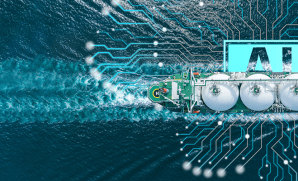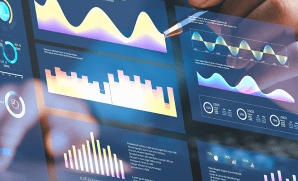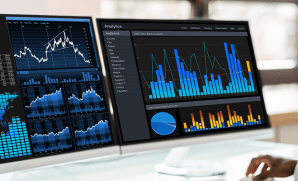Transformative AI Strategies in SAP SuccessFactors and How it is Shaping the Future of HCM
Publish Date: February 28, 2024As businesses evolve in the digital age, the role of Human Capital Management (HCM) solutions becomes paramount to optimize enterprise workforce capabilities. SAP’s on-premise and cloud human capital management (HCM) solutions have addressed critical HR transformation requirements for a couple of decades that proved crucial in improving core HR, payroll, attendance, talent management, and employee experience management.
In a significant move announced in October 2023, SAP announced its commitment to leveraging the potential of AI to elevate workforce management capabilities. Recognizing the limitations of traditional solutions, SAP advocates for innovation and agility to meet the evolving demands of today’s enterprise and place people at the heart of organizational initiatives. Focusing on AI-powered experiences, SAP aims to empower companies to gain a competitive edge by seamlessly integrating cutting-edge technology into their human capital strategies.
SuccessFactors: Advancing HCM Landscape with AI
SAP SuccessFactors solutions are part of the overall SAP portfolio, one of the most extensive sets of available business applications powered by SAP Business Technology Platform (SAP BTP). Its Human Experience Management (HXM) Suite is a powerful software that empowers individuals to do their best at work, strengthening HR connections across the business.
SuccessFactors focuses on processes such as sourcing, recruitment, training, succession planning, and other talent-related aspects. Functioning as a potent analytics tool, SuccessFactors goes beyond traditional boundaries, enhancing critical areas such as pay equity analysis, distribution of performance management, leadership evaluation, and more.
The infusion of AI into these layers brings about measurable improvements in content development, employee communications, case management, and overall employee services.
Charting a Multi-Scenario Roadmap
SAP has also outlined several use case families for AI across SuccessFactors modules with a multi-scenario roadmap for features. These encompass intelligent job descriptions, recommended learning and careers, talent mobility and marketplace, skills analysis and inference, employee policies and communications, use cases in employee benefits, and employee transactions. It also features Intelligent Job Descriptions and Interview Questions,
Harnessing its extensive domain expertise in talent processes across diverse industries, SAP strategically incorporates AI across various domains. In contrast to adopting a singular architectural approach, which involves utilizing only Microsoft Azure, OpenAI, IBM, or other tech stacks, SAP meticulously selects large language models (LLMs) tailored for specific use cases. This nuanced strategy ensures optimization and effectiveness in addressing their unique purposes.
As SAP collaborates with Microsoft on the copilot initiative, it is concurrently developing its counterpart – Joule – tailored for universal application across all functions. Explicitly designed for HR professionals, Joule is an AI-powered digital assistant within the SuccessFactors platform that offers valuable insights, automates routine tasks, and supports data-driven decisions. From personalized candidate matching for specific job roles to natural language processing (NLP) based self-help options for employees, Joules helps HR teams in many ways.

Image: SAP Joule
Understanding Joule’s AI Paradigm
SuccessFactors broadly categorizes its AI projects into Generative AI, Conversational AI, and Deep Learning AI. Customers can access various tools, including writing assistants, applicant screening, career conversations, learning tutors, and talent intelligence. They will be able to experience the advantages of this technology through a sequential release of features. In building out Joule, the paradigm comprises three workflows:
- Informational Patterns – searching for and delivering data such as benefits or leave balance
- Navigational Patterns – navigating a user through a process with cards and prompts, like building a career path
- Transactional Patterns – performing a transaction directly without going to the application module
As a conversational app, Joule answers questions while helping users with simplified workflows. This is a significant shift from filling out forms to telling a system what is to be done.
Working across all SAP products, Joules has been designed to keep a history of activities performed. It remembers what a user did last for ease of completing other work. For example, suppose an HR manager wants to incentivize an employee. In that case, they may need to check the person’s sales performance in CRM, put that data into the documentation justifying incentives, and then send it for approval. If someone is not well-versed with the CRM software, Joule becomes a guide for all the essential steps to check available data.
The architecture that underpins Joule is known as SAP Business AI. It has a variety of LLM and AI pipelines that can provide a variety of functions to different segments of the system. This, among other things, implies that Joule is an ‘open system’ capable of accessing deep transactional information.
Joule’s open architecture is vital for other tech companies, too. They would like to interface with, share data, and link to SAP SuccessFactors as they create their copilots and AI assistants, such as Galileo.
SAP’s Vision for Future-Ready Workforces
While other HCM vendors have not yet released products with such depth of AI as SAP did through SuccessFactors, the competition is brewing. Microsoft launched its Microsoft Dynamics 365 Copilot integrated with HCM and CRM products. Similarly, other HR tech solution providers are also enhancing their tools with Gen AI features.
For now, SAP has the richest of systems and is constantly moving ahead. The AI strategy is unified, detailed, and focused on the realistic needs of organizations. It is developing a productivity and operational efficiency landscape for the future-ready workforce in all industries.
















